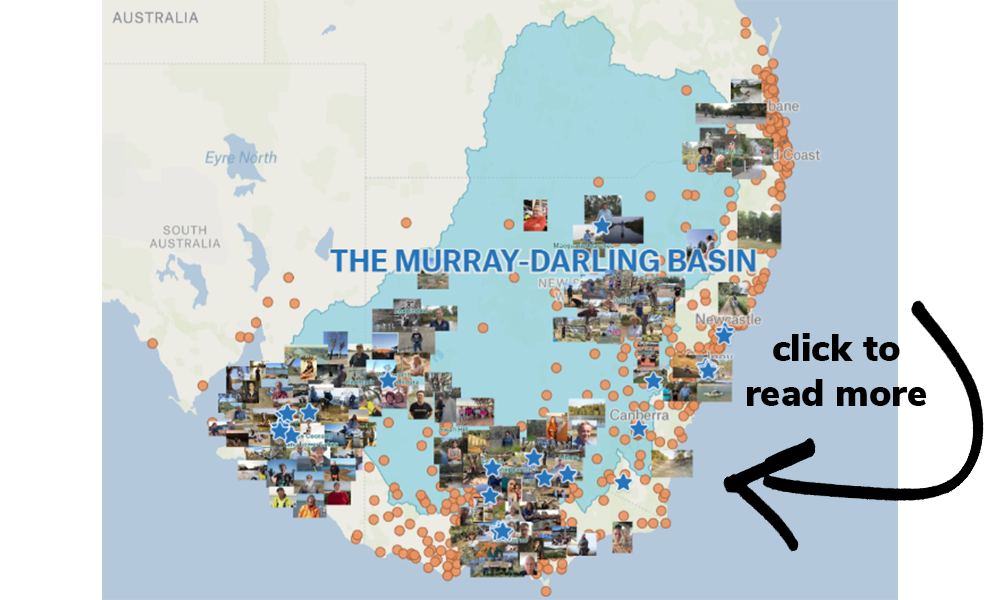1. Water can be bought for the environment again
Since 2015, governments have ruled out using the most effective and affordable method to get water for rivers – buying it from people who want to sell. Instead, they’ve favored expensive efficiency projects and irrigation upgrades. These have failed to deliver enough water and very little progress has been made on the Basin Plan as a result.
This new legislation allows the federal government to finally start buying water for the river again. Read more about how water buybacks work in this blog >>
2. It passed with the support of the Greens and crossbench
When the government first announced its legislation in September, we raised concerns that it didn’t go far enough. There were no guarantees that water would get to rivers and wetlands in the next few years, and First Nations were completely left out of the legislation.
Together with our allies in NSW, SA and QLD, we called on the government to strengthen the legislation. This public pressure helped the Greens and crossbench to negotiate a much better deal. It passed with the support of the Greens, and Independent Senators David Pocock, Lidia Thorpe, Jacqui Lambie and Tammy Tyrell.
It’s important to note that the legislation had support from every Basin state government except Victoria, who sided with the irrigation lobby to oppose it. Read more here >>
3. It ensures that 450 billion litres of water promised for the environment will be delivered by 2027
This 450 billion litres of water was promised in the Basin Plan and is absolutely vital to the health of the river system. However, under the previous Coalition government, a bogus “socio-economic test” was developed to limit how water could be recovered. It’s meant that to date, just 3% of this water has been set aside for rivers.
This legislation removes this huge roadblock with a thoughtful process: considering socio-economic impacts, recovering water for rivers where it’s most effective, and supporting communities with targeted funding. While the legislation delays the deadline (from 2024 to 2027) it also makes sure we can’t continue to kick the can down the road.
3. There are crucial improvements for First Nations water rights
The Murray-Darling is home to over 40 First Nations – yet they own just 0.2% of the water and have little say in how water is managed.
Thanks to powerful advocacy from the Murray Lower Darling Rivers Indigenous Nations (MLDRIN) and First Peoples across the Basin, the Greens and Independent Senator Lidia Thorpe were able to secure changes in the legislation to begin to address these injustices.
Along with increased funding for Aboriginal water entitlements, there is also a pathway for First Nations to have a much greater say over how their waterways are managed and a mandate to consider whether the Water Act is consistent with the principles of the UN Declaration on the Rights of Indigenous Peoples (UNDRIP). Read more in Lidia Thorpe’s media release here >>
4. It opens the door to more flows in the Darling-Baaka
The Darling-Baaka has been devastated by massive fish kills in the last few years. But little has been done to make sure the river has enough water to stop these disasters happening again.
The government has opened the door to allow additional water recovery for the Darling-Baaka. However, we still have many questions about how this will happen. We’ve learnt the hard way that the devil is in the details when it comes to water management!
5. We’ll get an independent audit of water recovery so far
We need a clear picture of how much water has been set aside for the river — and whether or not projects have delivered what they’ve promised. An independent audit is a no-brainer to help us get back on track.
6. There’s new powers to cancel dodgy water ‘offset’ projects
These projects were cooked up by NSW and Victorian state governments as a way to avoid having to actually return water to the environment. The idea behind them is that parts of the river, like wetlands and lakes, can be engineered to use less water – and that these infrastructure projects can then “offset” unsustainable extraction. This dodgy scientific method has been slammed by experts and never actually tested in the real world.
This new legislation means the federal government can cancel projects that don’t stack up, with the disastrous Menindee Lakes project likely the first to go. We’ll also be pushing for greater scrutiny of the nine wetland engineering projects currently proposed in Victoria. Read more here >>

